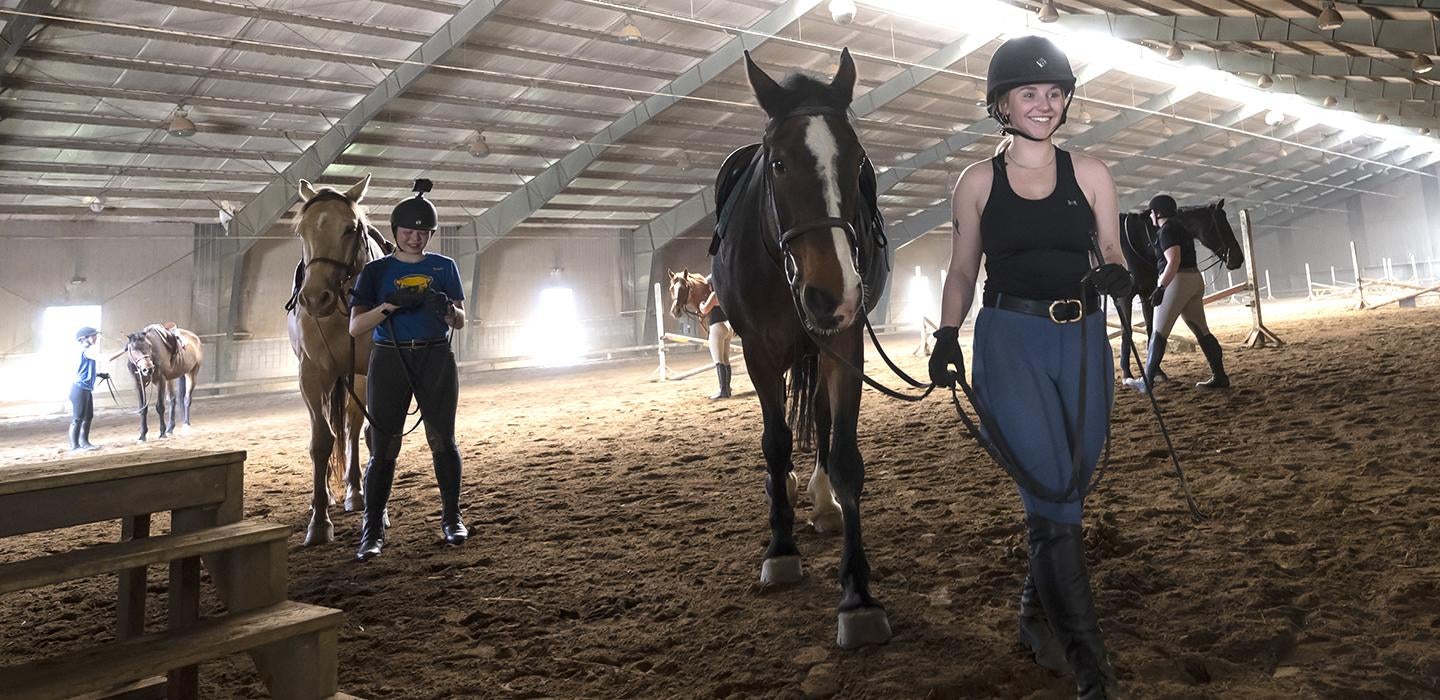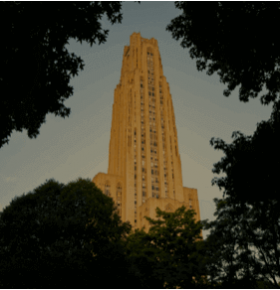
Subscribe to Pittwire Today
Get the most interesting and important stories from the University of Pittsburgh.Nestled 30 minutes north of the Pittsburgh campus on 165 acres of scenic Pennsylvania countryside is BarGee Farms, Pitt Equestrian Club’s practice arena and refuge from the bustle of Oakland. For Erin O’Callahan, the farm and the club have been a vital source of stress management and her most significant college friendships.
“Coming out here is nice because it’s very rural, it’s a nice break from school and we all have stress relief when we get on the horses,” said O’Callahan, a recent graduate. “It’s an awesome experience, and the team is really close.”
On May 4, the biology major and chemistry minor debuted as the first club member since 2017 to compete in the Intercollegiate Horse Show Association (IHSA) nationals, where she placed fifth.
“It’s very impressive,” said Elizabeth “Eggy” Giordano, the club’s president. To reach this milestone, riders spend an entire season (the duration of the academic school year) competing against 39 regions throughout the United States and Canada. Club members, who range in experience from beginner to advanced, can participate in about 10 competitions annually in Pennsylvania, Ohio and West Virginia to qualify for regional and national competitions.
O’Callahan’s win is a significant competitive achievement for the club, but it is not the team’s only impressive feat. For many riders, the club is part of the reason they chose Pitt for college. Members also said they’ve forged otherwise unlikely friendships in an oasis from the chaos of Pittsburgh and academic life.
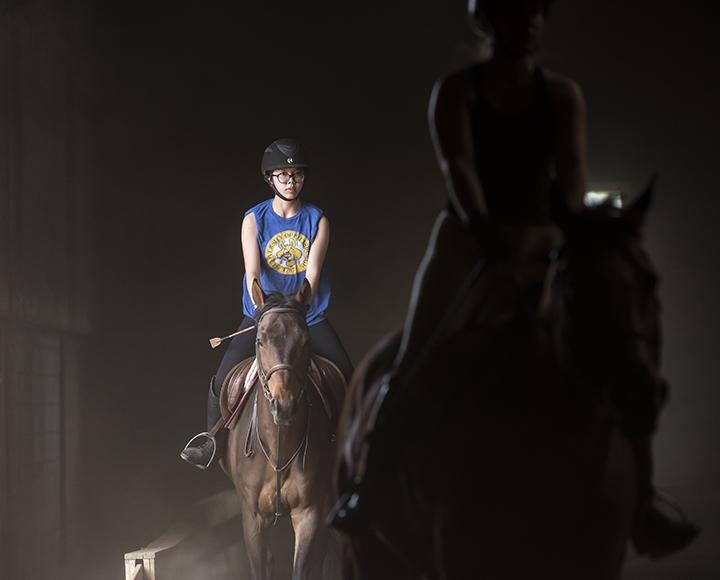
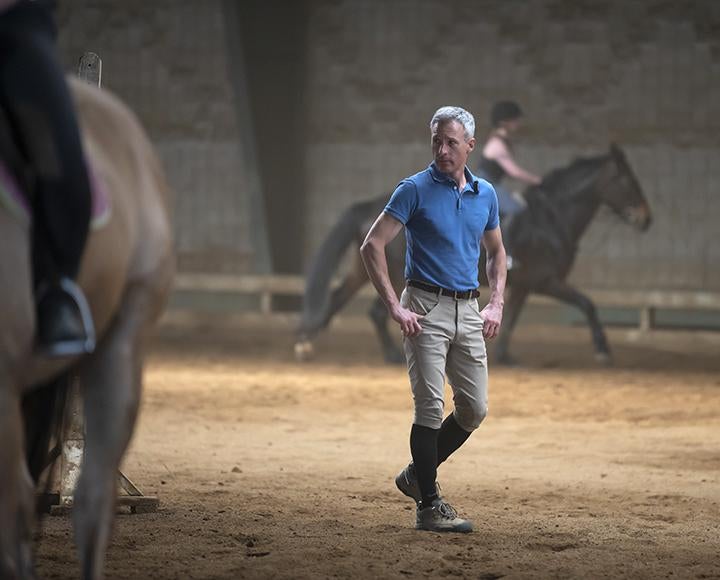
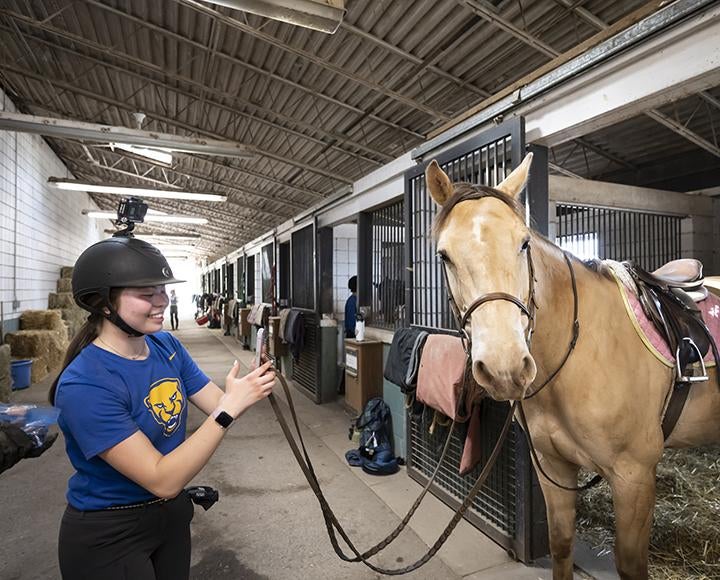
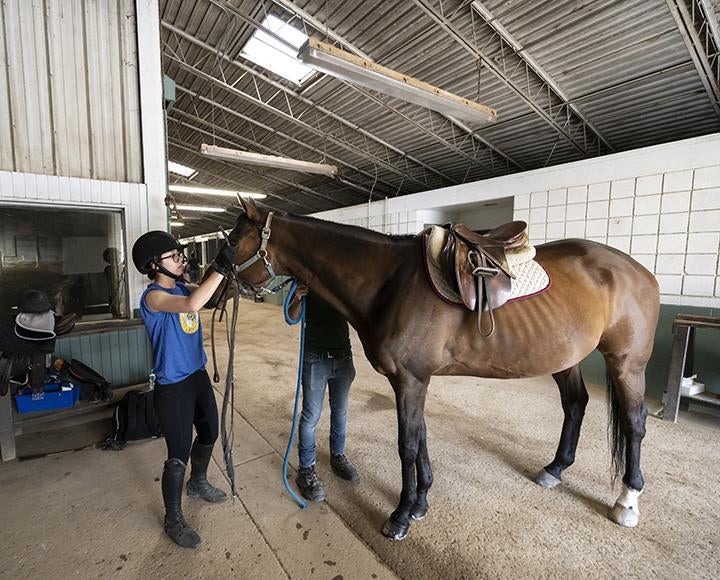
“It is a great escape from the city,” said Giordano, an exercise science major from Allentown, Pennsylvania.
“We love being out there. As beautiful as Pitt is with different escapes like hiking or Schenley Park, nothing compares to being at a barn for us horseback riders.”
Biology major and senior captain Isabel Liang called the rides therapeutic, especially during the last few years.
“During COVID, we were all stuck inside,” said Liang, who hails from Moorestown, New Jersey. “Being able to get outside of Pittsburgh and be with horses — it’s an escape from school, from sitting at home. I feel most expectations are that you won’t be able to find that kind of space when living in a city. So being able to have something relatively close and engage both my body and mind with working with animals is so nice. I’m so grateful to BarGee for letting us ride there.”
The club began working with BarGee Farms, owned by Barbara Bancroft, a decade ago. The partnership ensures many benefits for club members, including access to eight horses for training sessions, which are broken up throughout the week so all members get an equal amount of riding time; lessons from a veteran trainer, Jim Boyce; and low annual club fees, which include the cost of classes, gear, show registrations, transportation and lodging.
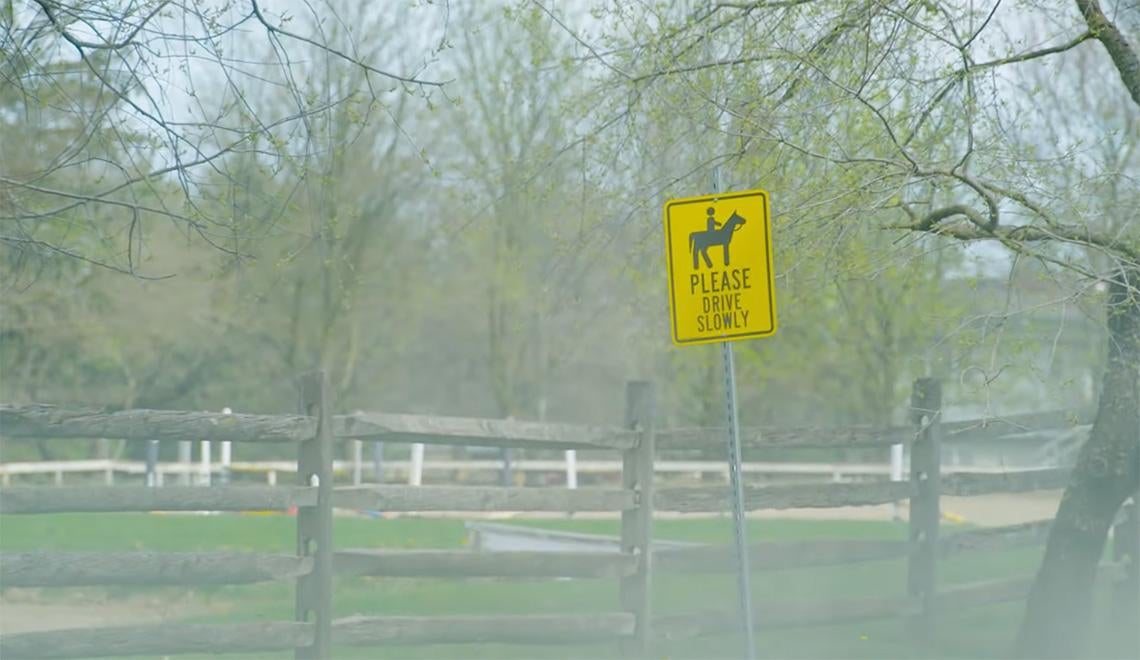
This past fall, the club reached capacity — 40 active members — for the first time, which signaled to Liang that the niche community of horse lovers on campus is growing along with a general appreciation for the sport, which requires both prowess with animals and athleticism.
“The sport is very unique,” said Liang. “The fact that we can hold such a club in an urban environment is a feat in itself. We’re a sport that isn’t known for being a sport, but through our passion and hard work, we make it work.”
Giordano considers riding a type of language because it requires “a connection with a horse, which is different than any other sport because [of] subtle nuances of moving the horse around and how much goes into it.”
Despite the steady rise in interest and membership over the last few years, like all student organizations, pandemic-related challenges remain fresh in the minds of club members. The team had to launch a fundraising campaign in 2020 to stay afloat. Their efforts resulted in nearly doubling the campaign goal.
Still, the club continues to thrive and unify the University’s population of horse lovers from across campus — and introduce the sport to newcomers. Giordano said her biomechanics classmates, who she invited to the farm for a project, were astounded by its existence.
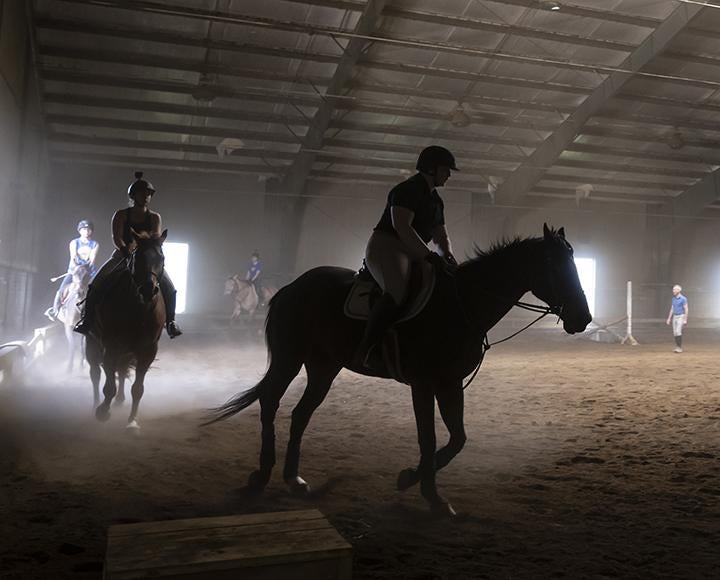
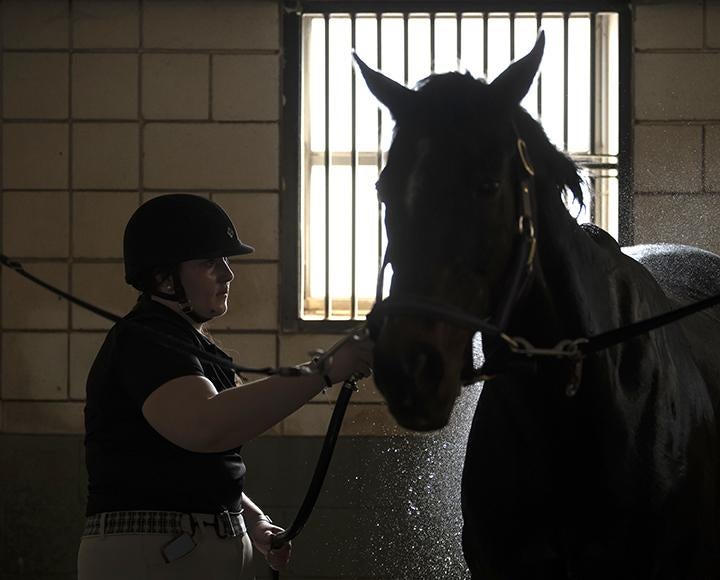
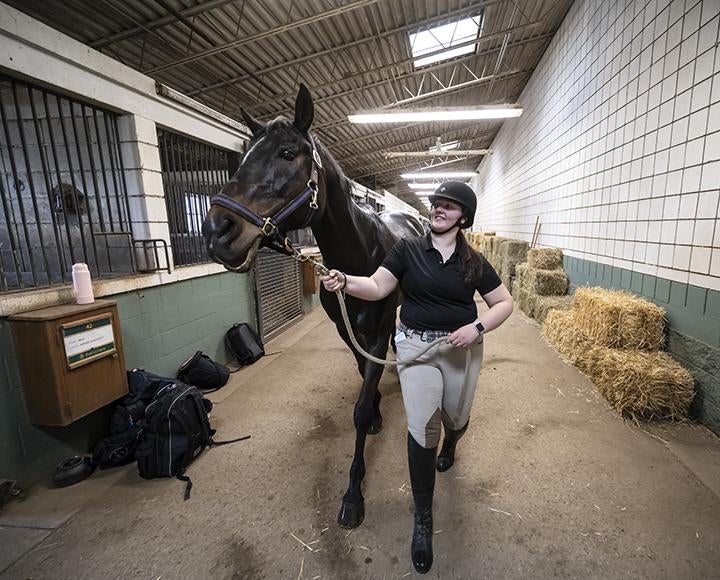
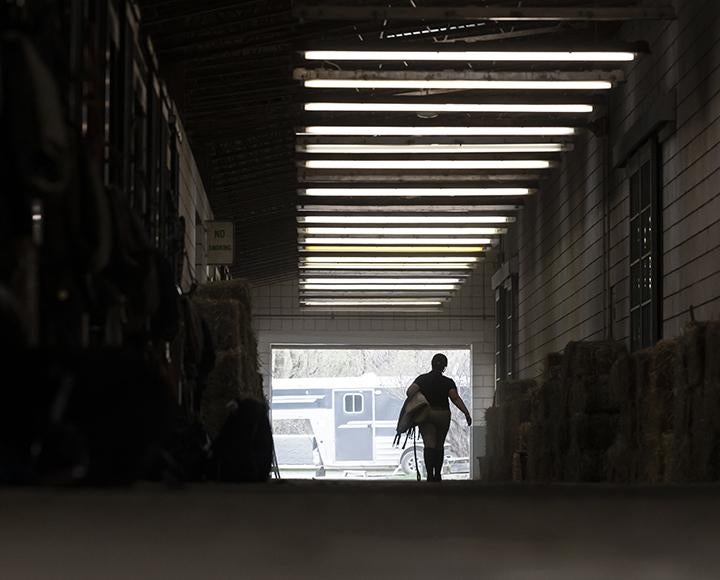
But the real impact, Liang and Giordano agreed, comes from the diversity among those brought together through the club.
“People like to call us horse girls, but we are much more than that,” said Liang. “There’s friendship; there’s competition; there’s so many things you can learn from the club, from the people within the club.
“We have engineers, English majors, film majors,” said Giordano. “The club offers a good way of connecting people from different parts of the University that you would never meet otherwise, and that you all have a common interest. You can all talk about stuff you can’t discuss with other people.
“If I tried to talk about horses to some of my friends, they wouldn’t understand a thing I’m saying, but the second I start talking to someone on my team, it’s instantly clicking. It’s fantastic.”
— Kara Henderson, photography by Aimee Obidzinski
Saddle up
Get to know horse show lingo: These are 5 important concepts to know, according to Eggy Giordano.
- Hunter seat equestrian is the riding style the club focuses on, which is less about how high one jumps a course and more about how well riders can jump a course and display their skill.
- The different gaits of a horse are walk, trot, canter and gallop. These are the horse's gears, but riders can adjust within those gears to do what are called forward or collected gaits.
- The horse's position is very important, especially in jumping, as they need to leap appropriately to clear the jump safely.
- Bending the horse, which refers to the lateral curvature of the horse from head to tail, is a strategy riders use to move the horses around their legs to ensure they are in the right positions to make turns. Riders also use bending to pick up the proper lead or direction of movement.
- Flat vs. jumping courses. The judge will tell the riders to change gaits and maybe do a sitting trot or dropped stirrups in flat courses. Then the judge will score them based on their ability to control those transitions while on a horse the rider has never ridden. In jumping courses, there is only one rider in the ring who is judged on their execution of the jumping course; multiple riders are in the arena at once during flat classes.


